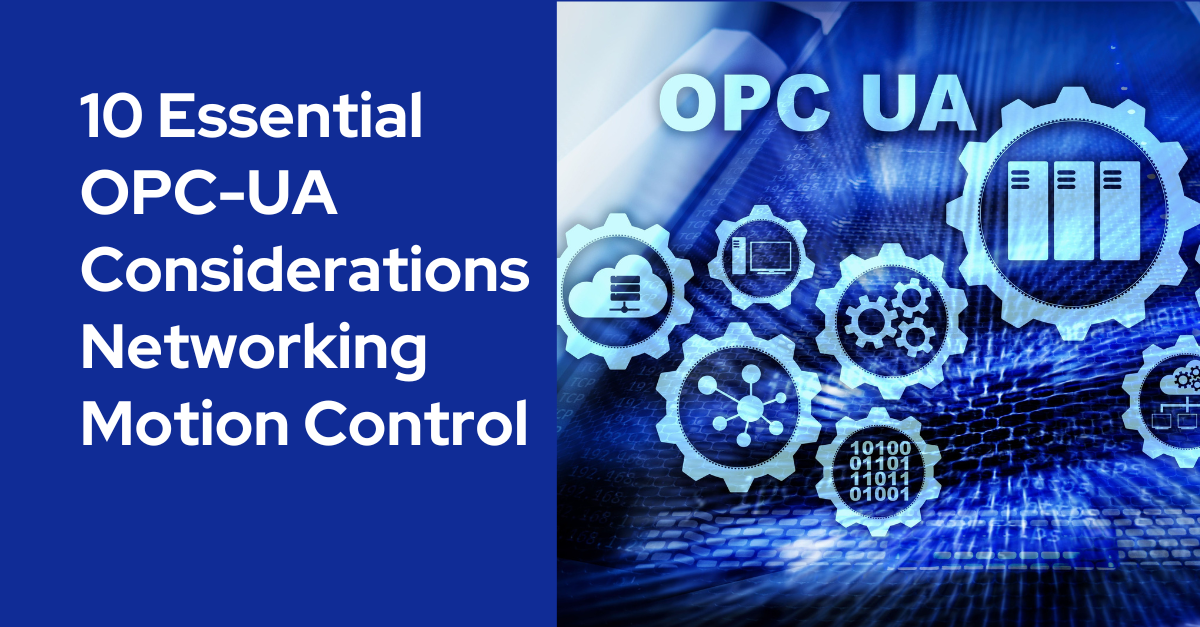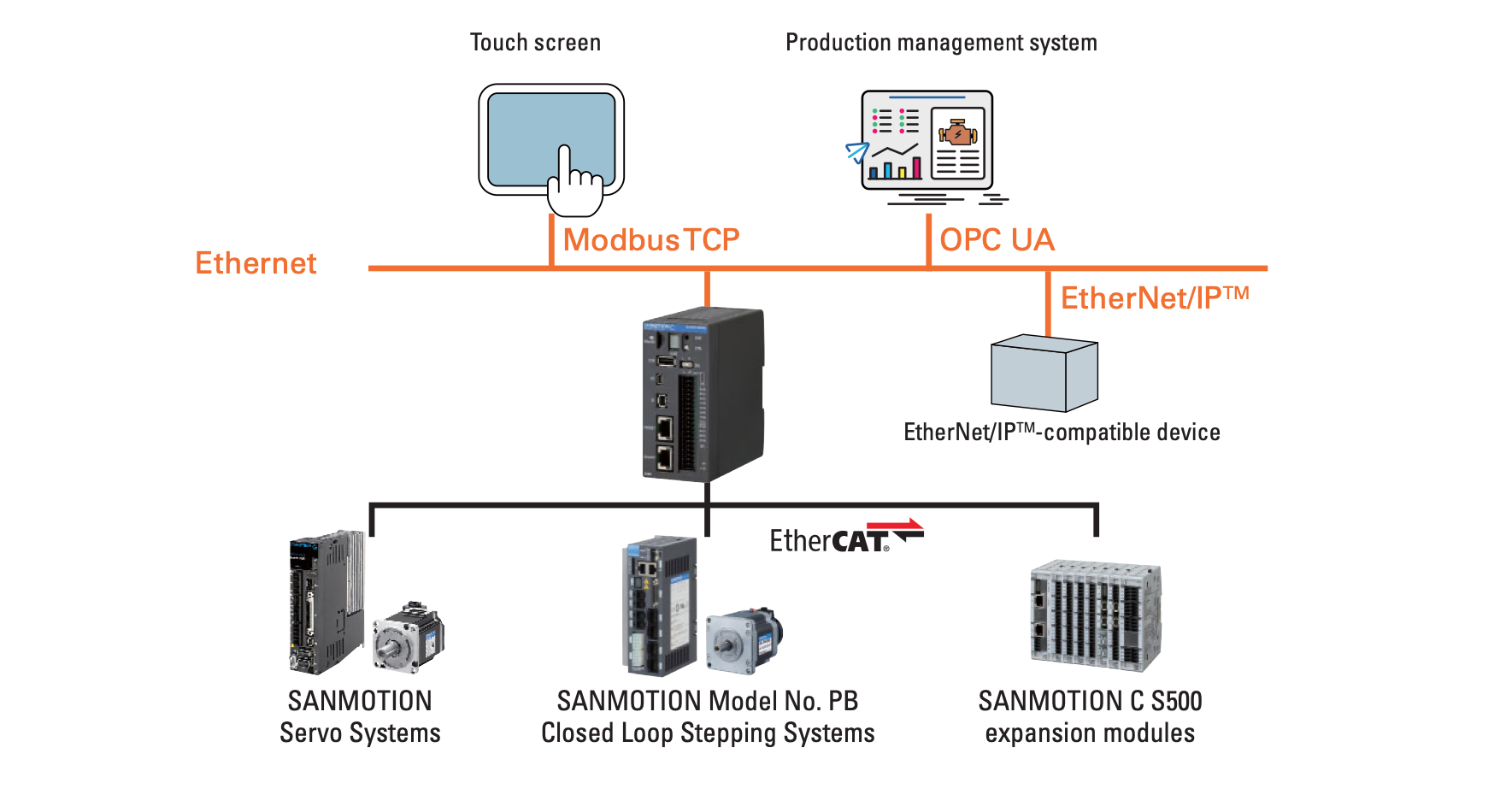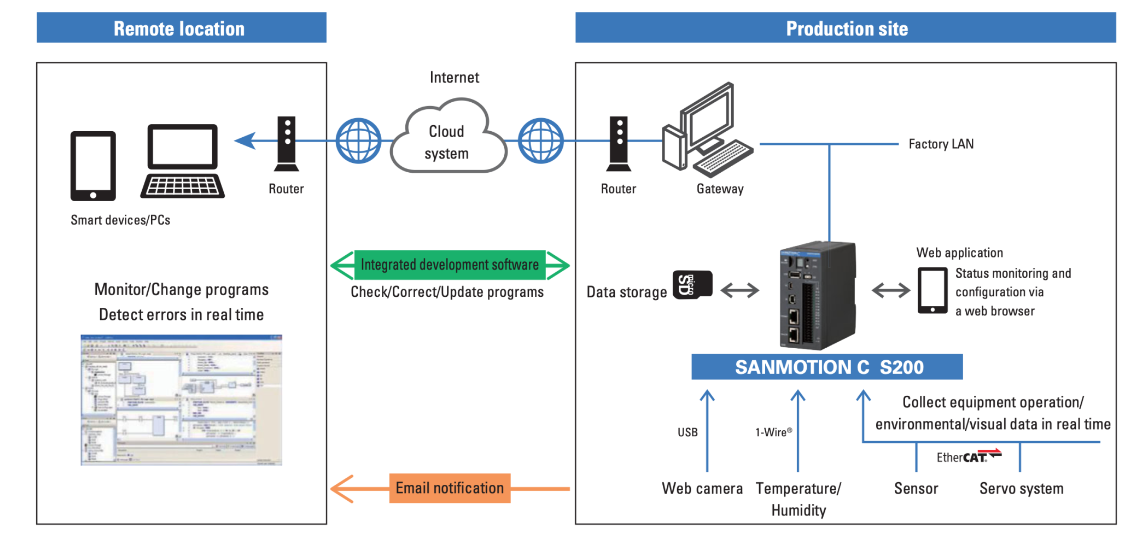
Protocol For Motion Control Communication
 A SANMOTION motion controller with OPC-UA compatibility serves as a crucial link in an Industry 4.0 ecosystem, allowing seamless integration and communication between motion control systems and other industrial devices and software platforms. It enables real-time data exchange and coordination, facilitating agile and interconnected manufacturing processes characteristic of Industry 4.0.
A SANMOTION motion controller with OPC-UA compatibility serves as a crucial link in an Industry 4.0 ecosystem, allowing seamless integration and communication between motion control systems and other industrial devices and software platforms. It enables real-time data exchange and coordination, facilitating agile and interconnected manufacturing processes characteristic of Industry 4.0.
In protocol terms, OPC-UA serves as the standardized communication protocol that enables interoperability and data exchange between different industrial automation systems, similar to how HTTP (Hypertext Transfer Protocol) facilitates communication between web servers and browsers on the internet.
 OPC-UA is like the nervous system of Industry 4.0, enabling seamless communication and coordination among different components, much like how the nervous system facilitates communication within the human body.
OPC-UA is like the nervous system of Industry 4.0, enabling seamless communication and coordination among different components, much like how the nervous system facilitates communication within the human body.
With below 10 criteria in mind adding a SANMOTION OPC-UA enabled servo motion controller serves as a vital component in your Industry 4.0 landscape, enabling smooth integration and communication between motion control systems and other industrial equipment. This compatibility facilitates efficient data exchange and coordination, supporting the agile and interconnected manufacturing processes essential for Industry 4.0’s vision of smart factories.
10 Prerequisites For Linking An OPC-UA Servo Motion Controller
- OPC-UA Server: This is the software component that runs on the server side and manages data exchange between the SANMOTION motion control system and client applications. The OPC-UA server exposes data points (variables, methods, and objects) from the motion control system to client applications.
- Motion Control System: This is the hardware and software responsible for controlling motion-related processes such as positioning, velocity, and acceleration. The motion control system includes motor drives, controllers, sensors, and actuators. (Click our System Configuration button below for tutorials explaining how to choose each component.)
- Data Points: These are the variables, parameters, and status information relevant to the SANMOTION motion control system that are exposed by the OPC-UA server. Examples include position feedback, velocity, acceleration, alarm status, and control setpoints.
- OPC-UA Client: This is the software component that connects to the OPC-UA server to read or write data points and interact with the SANMOTION motion control system. OPC-UA clients can be HMI (Human-Machine Interface) applications, SCADA (Supervisory Control and Data Acquisition) systems, custom software, or other industrial applications.
- Security: OPC-UA supports various security features such as authentication, encryption, and access control to ensure secure communication between the client and server and prevent unauthorized access or data tampering.
- Data Subscription: OPC-UA allows clients to subscribe to real-time data changes using subscriptions. This mechanism enables efficient monitoring of motion control system variables by receiving notifications from the server when values change.
- Historical Data Access: OPC-UA servers may support historical data access, allowing clients to retrieve past values of variables for analysis, reporting, or troubleshooting purposes.
- Error Handling and Logging: Robust error handling mechanisms and logging capabilities are essential for diagnosing issues, troubleshooting, and ensuring the reliability of the OPC-UA connection and motion control system.
- Network Infrastructure: A reliable network infrastructure with sufficient bandwidth, low latency, and appropriate network configurations (e.g., firewalls, routers) is crucial for maintaining stable communication between the OPC-UA server and clients, especially in industrial environments.
- Integration with Control Systems: OPC-UA connections often need to be integrated with existing control systems, PLCs (Programmable Logic Controllers), or MES (Manufacturing Execution Systems) to enable seamless data exchange and coordination between different components of the industrial automation ecosystem.
Request A Consultation
Request a consultation for your customization needs. Our team will be in contact with you soon to provide further information and answer any questions you may have.
